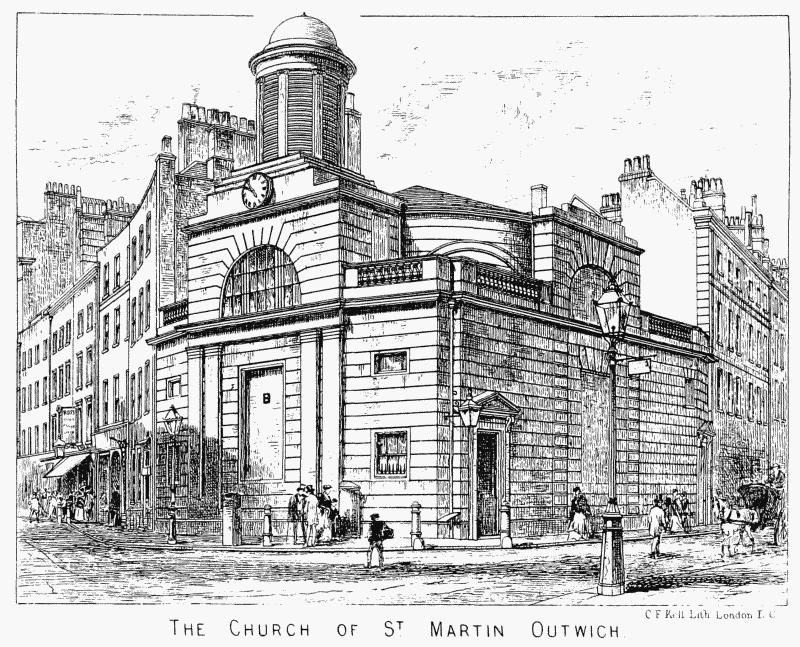Memorials of the Guild of Merchant Taylors of the Fraternity of St. John the Baptist in the City of London. Originally published by Harrison, London, 1875.
This free content was digitised by double rekeying. All rights reserved.
'Memorial V: The Church of St Martin Outwich', in Memorials of the Guild of Merchant Taylors of the Fraternity of St. John the Baptist in the City of London, ed. C M Clode (London, 1875), British History Online https://prod.british-history.ac.uk/no-series/taylors-guild-london/pp46-47 [accessed 27 April 2025].
'Memorial V: The Church of St Martin Outwich', in Memorials of the Guild of Merchant Taylors of the Fraternity of St. John the Baptist in the City of London. Edited by C M Clode (London, 1875), British History Online, accessed April 27, 2025, https://prod.british-history.ac.uk/no-series/taylors-guild-london/pp46-47.
"Memorial V: The Church of St Martin Outwich". Memorials of the Guild of Merchant Taylors of the Fraternity of St. John the Baptist in the City of London. Ed. C M Clode (London, 1875), British History Online. Web. 27 April 2025. https://prod.british-history.ac.uk/no-series/taylors-guild-london/pp46-47.
V. THE CHURCH OF ST. MARTIN OUTWICH.
This, and the Almshouses at the Hall (to be referred to presently), are both Institutions of the Past. The advowson of St. Martin's Rectory in ancient time was, as Stowe informs us, in the gift of John, Earl of Warren and Surrey, who presented to it in the reigns of Edward the Second and Edward the Third. Dying without issue in the year 1347, the last of that noble and ancient family, he devised his Lands to the Crown, from whence this Advowson was purchased by John Churchman, probably acting as a Trustee for William and John Oteswich, who by Licence of Henry the Fourth, in the 6th year of his reign, gave the Advowson, with four messuages and seventeen shops, to the Master and Wardens of Taylors and Linen Armourers, Keepers of the Guild and Fraternity of St. John Baptist in London, and to their successors in Perpetual Alms, to be employed upon their poor Brethren and Sisters. In virtue of this Grant, the Company continued Patrons until the removal of the Church and the union of the benefice with St. Helen's, under the scheme to be mentioned hereafter.

The church of St. Martin Outwich
The church is said to have been rebuilt by the Oteswiches (whose name became corrupted into Outwich) (fn. 1) in the 14th Century. It was Gothic, 60 feet in length, 42 in breadth, and 31 in the height of the roof. "The body of it consisted," according to Ellis, "of brick and stone strengthened at the corners by a massy rustic, the windows large and of the coarse Gothic, and a battlement of square, plain workmanship round the building. The turret rose plain from the top, arched and supported by four piers. The dome consisted of a sort of moulding in architecture, of a round and a hollow, and its crown ornamented with a ball from which rose the fane."
It was known in 1558 by the name of St. Martin's "with the well and two (fn. 2) bokettes," though when Stowe wrote his " Survey," these had been "turned to a pump." To this church the Company resorted for dirges and obites before the Reformation, and for funerals and election days after it. The almsmen of the Company (as we shall see hereafter) had also to give constant attendance, "there serving God and his Saints, keeping all Divine Service said and sung there weekly, and praying every day" for the rulers of the Company (inter alia). The Oteswiches were interred there, and as the church escaped the Fire of London their monument remained nearly in situ (though the church was rebuilt in 1796) until removal in 1874 to the Church of St. Helen's, there to be re erected in the Chapel of the Holy Ghost, appropriated as a mortuary chapel of St. Martin's.
By the Order in Council of the 5th. May 1873 the parish and benefice was united to those of St. Helen's. The tithes, amounting to 2,250l., raised under the 37th Henry VIII., c. 12, and the London Tithe Act, 1864, were apportioned to the endowment of St. Helen's, and to three other parishes mentioned in the Council Order. (fn. 3)